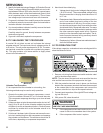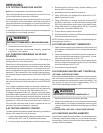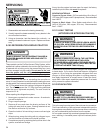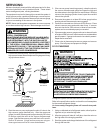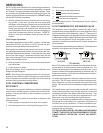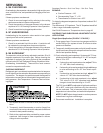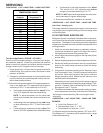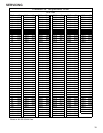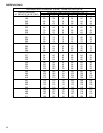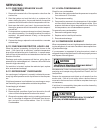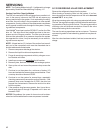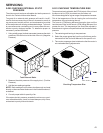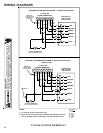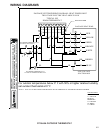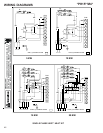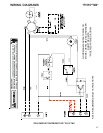
SERVICING
43
S-200 CHECKING EXTERNAL STATIC
PRESSURE
The minimum and maximum allowable duct static pressure is
found in the Technical Information Manual.
Too great of an external static pressure will result in insuffi-
cient air that can cause icing of the coil, whereas too much air
can cause poor humidity control, and condensate to be pulled
off the evaporator coil causing condensate leakage. Too much
air can cause motor overloading and in many cases this con-
stitutes a poorly designed system. To determine proper air
movement, proceed as follows:
1. Using a draft gauge (inclined manometer) measure the static
pressure of the return duct at the inlet of the unit, (Negative
Pressure).
Total External Static
2. Measure the static pressure of the supply duct, (Positive
Pressure).
3. Add the two readings together.
NOTE: Both readings may be taken simultaneously and read
directly on the manometer as shown in the illustration above, if
so desired.
4. Consult proper table for quantity of air.
If the external static pressure exceeds the minimum or maxi-
mum allowable statics, check for closed dampers, dirty filters,
undersized or poorly laid out ductwork.
S-201 CHECKING TEMPERATURE RISE
Temperature rise is related to the BTUH output of the unit and
the amount of air (CFM) circulated over the indoor coil.
All units are designed for a given range of temperature increase.
This is the temperature of the air leaving the unit minus the
temperature of the air entering the unit.
The more air (CFM) being delivered through a given unit the
less the rise will be; so the less air (CFM) being delivered, the
greater the rise. The temperature rise should be adjusted in
accordance to a given unit specifications and its external static
pressure.
1. Take entering and leaving air temperatures.
2. Select the proper speed tap from the unit's blower perfor-
mance data in the Technical Manual for the specific unit.
3. Take motor amperage draw to determine that the motor is
not overloaded during adjustments.
T
T
RISE = SUPPLY -
T T
Checking Temperature Rise



